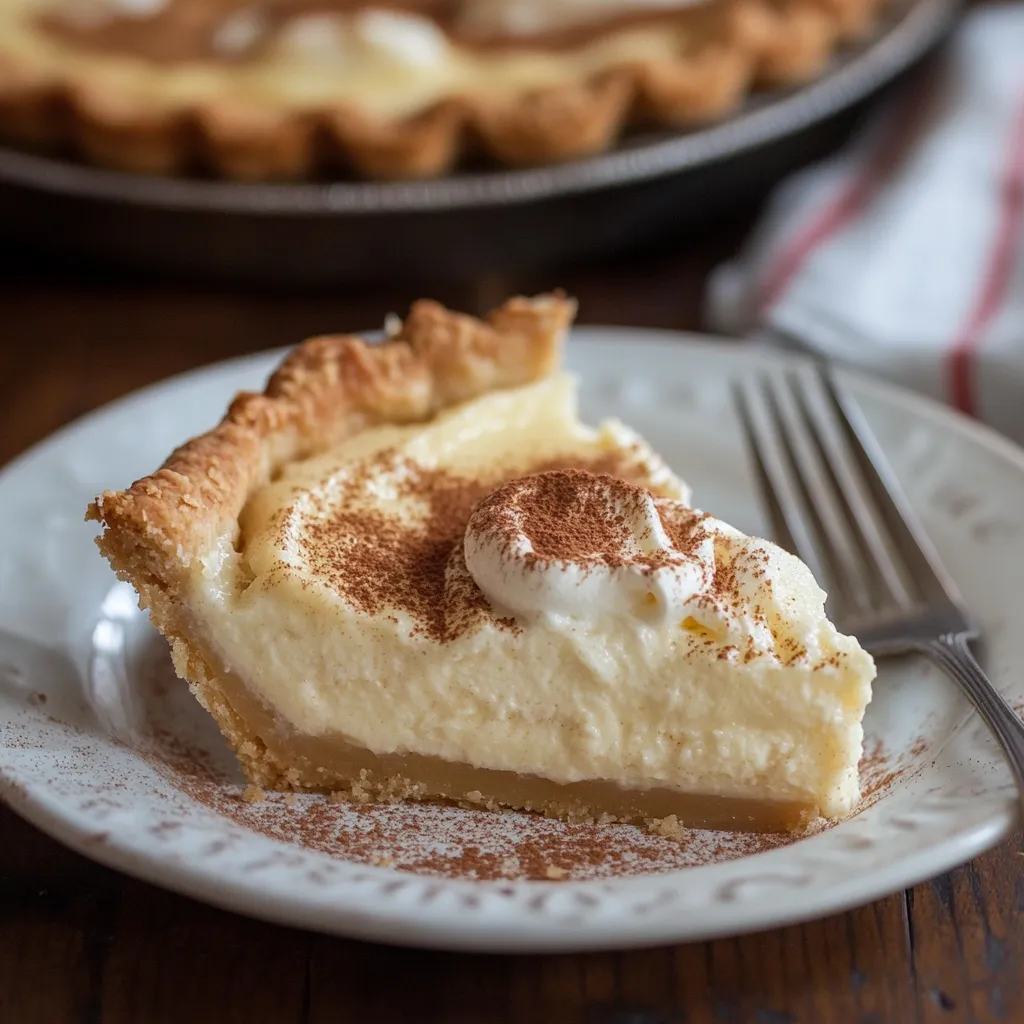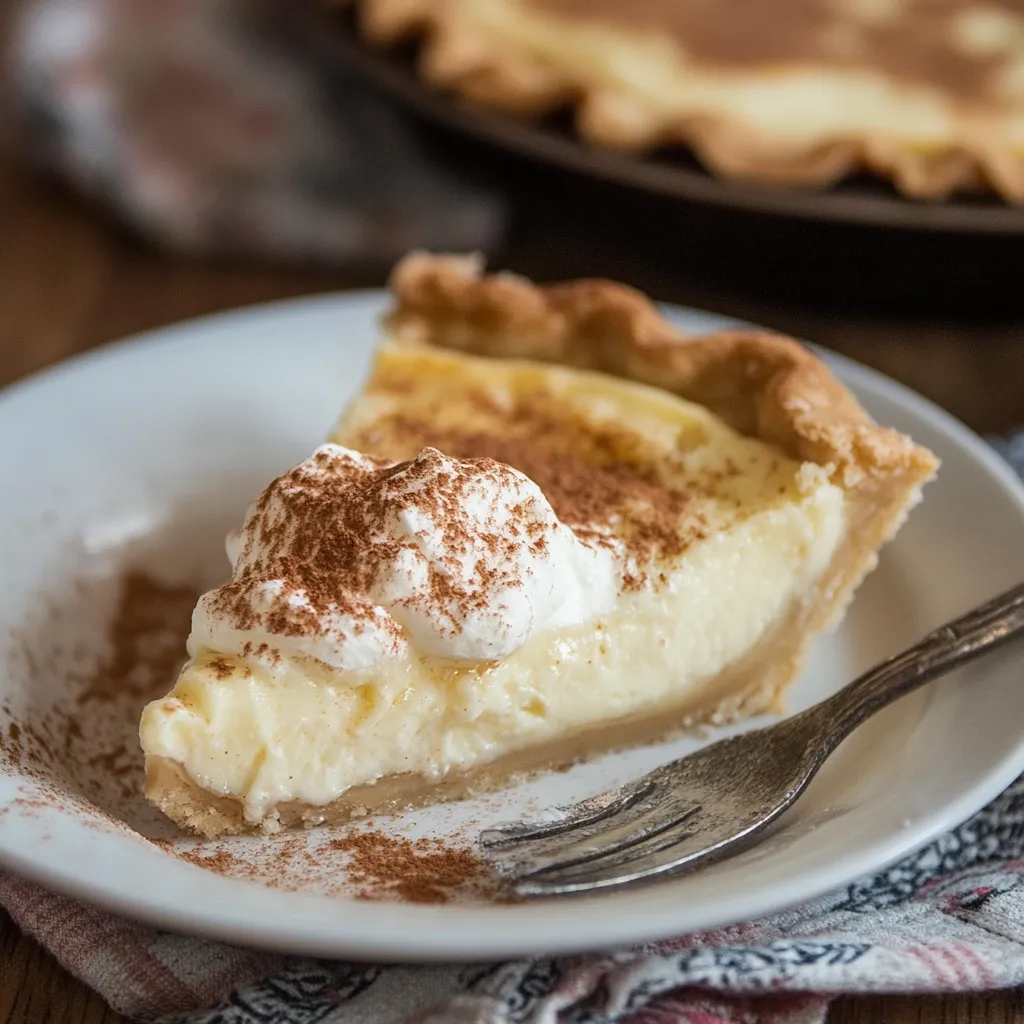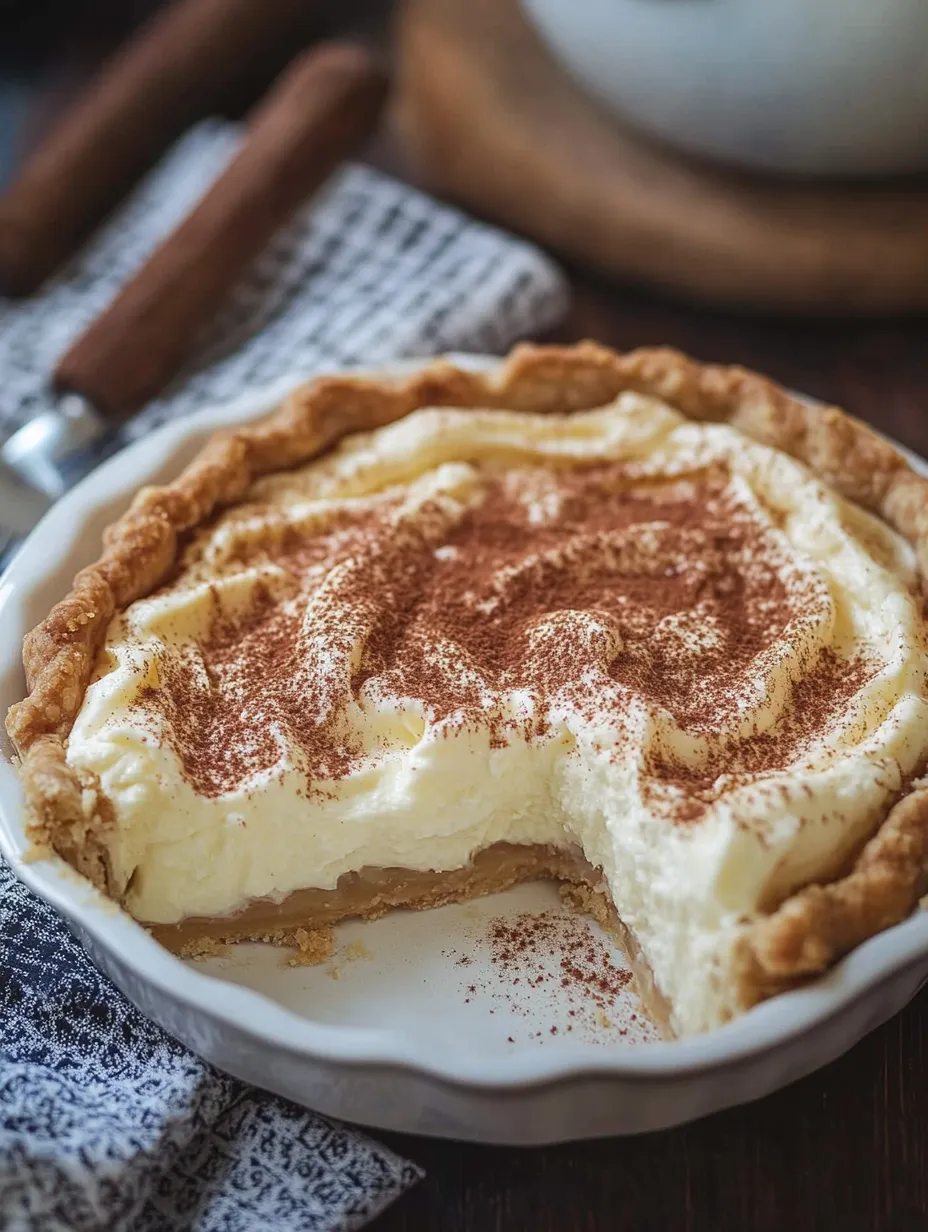 Pin it
Pin it
This Sugar Cream Pie captures Indiana's food history in every bite. The velvety, vanilla-rich filling sits in a crisp, buttery shell that breaks perfectly with each bite, bringing homestyle comfort straight to your table.
When I baked this for our family reunion, my elderly aunt couldn't stop talking about how it reminded her of what her mom used to whip up decades ago. That's what I love about old-time recipes - they bring families together across time.
Key Ingredients and Smart Choices
- Heavy Cream: Pick the fattiest version you can find for the best thickening
- Butter: Go for European brands to get extra flakiness and richness
- Cornstarch: Make sure yours isn't old for proper setting
- Vanilla: Stick with real extract for the best taste
- Cinnamon: Newly bought cinnamon really lifts the flavor
 Pin it
Pin it
Step-by-Step Guidance
- Getting Your Crust Ready:
- Your pie crust needs everything super cold. I actually put my flour and mixing bowl in the fridge first. Look for those little butter chunks to look like small peas - that's what gives you those awesome flaky bits.
- First Bake of Your Crust:
- During the first bake, wait for the edges to turn slightly golden. The bottom should look cooked but not brown since it'll keep baking once you add the filling.
- Cooking Up the Filling:
- You've got to stay right by the stove for this part. The magic moment comes when slow bubbles pop up and your whisk leaves trails that don't quickly disappear - that shows your cornstarch is working.
- Mixing Everything Together:
- Getting the temps right matters a lot. Your cream shouldn't be cold from the fridge or you'll get lumps, and mix in the melted butter while it's warm but not hot.
- Getting the Filling in the Crust:
- Use a rubber spatula to scrape every last bit into your crust. Gently smooth the top so you don't trap air bubbles underneath.
 Pin it
Pin it
My grandma always told me a perfect sugar cream pie should hold its shape when cut but feel silky in your mouth. She taught me to listen to the bubbles while cooking - they make a different sound when the filling's ready.
Mastering the Perfect Consistency
Getting that just-right texture takes a bit of know-how:
- Keep your spoon moving so no lumps form
- Look for it to coat your spoon without running off
- Let it rest undisturbed while it sets
- Find that sweet spot between too firm and too soft
Smart Temperature Control
Every step needs its own temperature approach:
- Your butter needs to stay super cold for the crust
- Let cream sit out a bit before using
- Cook over low heat to avoid burning
- Let it cool completely for best texture
Fixing Common Problems
If your filling seems too liquid:
- Make sure it's thick enough before taking it off the heat
- Check if your cornstarch is too old
- Give it more time to cool down
- Check that you used heavy whipping cream
If it feels grainy in your mouth:
- Mix your sugar thoroughly before adding other stuff
- Warm everything up slowly so sugar melts evenly
- Don't stop stirring while it cooks
- Keep an eye on how hot your stove gets
Local Twists
Different families make it their own way:
- Some folks mix in egg yolks for extra richness
- Spice blends change from house to house
- Many areas love adding whipped cream on top
- Some cooks use flour instead of cornstarch
Looking Back
This Sugar Cream Pie isn't just a tasty dessert - it's a taste of American cooking history. Each spoonful showcases how clever home cooks turned simple ingredients into something special.
The real beauty comes from its simplicity and the care you put into each step. When you take your time with it, you're not just making dessert, you're keeping alive a tradition that's been passed down through countless kitchens.
Creating Deeper Flavors
Understanding how everything works together:
- Let your butter cook just a tiny bit for a nutty taste
- Warm your cream before adding vanilla to wake up the flavor
- The cinnamon gets even tastier the longer it sits
- Brown sugar gives you those caramel-like notes
Making It Look Amazing
Try a fancy edge pattern on your crust
Sprinkle cinnamon through a paper cutout for a design
Add some sugar crystals on top for sparkle
Cut tiny shapes from extra dough to lay on top for special times
Keeping It Fresh
Store it right to keep it tasting great:
- Put plastic wrap directly on the filling surface
- Keep away from foods with strong smells
- Store in the back of your fridge where it's coldest
- Take it out 15 minutes before serving
 Pin it
Pin it
Tasty Season Changes
Spring - Mix in some fresh orange zest
Summer - Serve with a handful of berries
Fall - Go heavier on cinnamon and nutmeg
Winter - Add a touch of maple flavor
Quick Problem Solvers
Fast fixes when things go wrong:
- Filling too stiff? Stir in a bit of warm cream
- Crust pulling away? Make sure it rested enough
- Getting a skin on top? Press plastic wrap onto the surface
- Browning too fast? Move your oven rack down a level
This pie shows off what makes American farm cooking so special. It proves you don't need fancy ingredients to make something unforgettable - just care, attention, and good technique.
Every time I mix up this recipe, I can't help thinking about all the home cooks who've made it over the years, turning everyday pantry items into something truly special. It's more than dessert - it's proof that sometimes the simplest things are the most impressive.
Frequently Asked Questions
- → What’s the point of vodka in the crust?
- Vodka evaporates during baking, leaving behind a flakier crust since it doesn’t create gluten like water does.
- → Is it okay to skip vodka?
- You can swap vodka for cold water. The crust will still work, just not as flaky.
- → Why does it take long to chill?
- Chilling helps the pie set fully, so it slices cleanly and has the right texture.
- → Can I prep this pie early?
- Sure, it keeps well in the fridge for up to 2 days.
- → What’s with the name Sugar Cream Pie?
- It gets the name from the star ingredients in its filling: sugar and cream.
